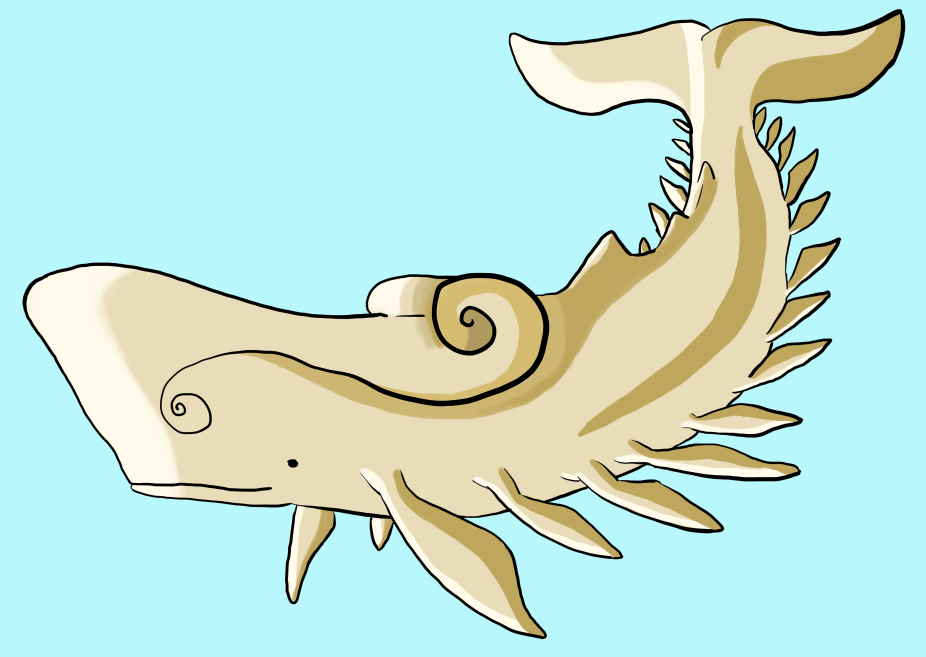Brass Whale
Anatomy
Brass whales are an enormous size, reaching lengths of up to 60 metres in adult males, and 45 metres in adult females. They have a thick layer of shiny skin, with a similar composition, texture and appearance to brass, hence the name. Brass whales have thirteen small pectoral fins, along with three pelvic fins, five dorsal fins and an incredibly large caudal fin.
They are a sexually dimorphic species, with males being considerably larger than females. Females are also lighter in colouration than males, with large white spots along their backs and thin purple streaks along their fins, while males have pink streaks.
Diet & Stalkfly Relationship
Brass whales are sulphurivores, meaning they consume mostly sulphur and other minerals. Sulphur floats through the murky waters of the Inner Ocean, especially around the brim stone, and they harvest large quantities with their engulfing mouths. They have a diet of about 70% sulphur dust, and the other 30% is comprised of floating debris in the environment and plankton.
When these gargantuan creatures sift through the surface of the brim stone, they unearth an entire ecosystem of writhing creatures. These creatures are consumed by swarms of stalkflies, as they cannot penetrate the skin of the brass whales but know that they will unearth plentiful amounts of food.
Habitat & Predation
Deep in the pitch black Inner Ocean are herds of brass whales in their hundreds. These animals circle the Brim Stone as they eat their diet of sulphur. When they are not circling this core stone, they are swimming in their graceful herds through the ocean, minding their own business as one of the largest animals in the planet and unable to be eaten by most other creature. Despite barely any creature preying on them, there is one species these animals avoid at all costs: wraths.
These animals are also known as the ghosts of the sea, thanks to their whitish colouration. Wraths are the ultimate apex predator of the Inner Ocean, able to take down any creature including brass whales, which is why these docile cetaceans are so afraid of them. Brass whales have developed ways of detecting wraths, such as detecting specific vibrations that indicate one is close by.






I'm excited for each new species. I can imagine the composition of their skin means they weigh an extraordinary amount. Do you have any insight on their weight?
Thank you so much! <3 the whales definitely weigh a lot, probably about four times as much as a blue whale considering they're over twice as big xD I don't know how much brass weighs, and I can't be bothered to figure out the math on how much a whale would weigh, so a guess is the best I can do xD
Makes sense to me, that's a monster of a whale!